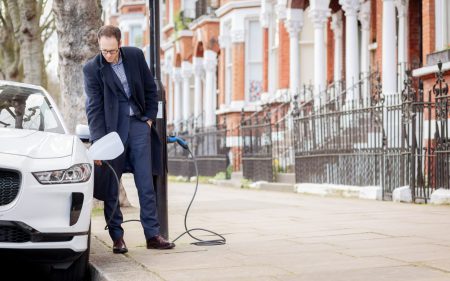Do you know your mild hybrid from your PHEV ahead of the accelerated ban on sale of new petrol and diesel motors from 2030?
Boris Johnson has confirmed a new deadline for the ban on sale of new petrol, diesel and hybrid cars in 2030
Some hybrids will be on sale longer, with a later ban on new models from 2035
We outline the differences between electric and hybrids cars and when they will likely disappear from showrooms
The ban on the sale of petrol, diesel and hybrid cars has been accelerated.
All new cars with internal combustion engines will be prohibited from sale in 2030, while new hybrid vehicles than can, in the words of Boris Johnson, ‘drive a significant distance without emitting carbon’ will be removed from showrooms five years later in 2035.
With many different types of hybrid cars and a swirling of acronyms being used across the sector, here’s an easy guide and jargon buster to help you through the minefield of electric vehicle terms and which motors will be banned and when…

Battery Electric Vehicle (BEV)
Also referred to as: Electric Vehicle (EV), pure electric, fully electric
Banned in: Never
Example models: Tesla Model 3, Volkswagen ID.3, Nissan Leaf, Jaguar I-Pace, Audi e-tron.
Battery Electric Vehicles are those that are entirely powered by a battery and electric motors 100 per cent of time.
The vehicle itself produces zero emissions, has no fuel tank, no exhaust pipe and no internal combustion engine whatsoever.
All BEVs need to be plugged in to have the batteries replenished, which in most modern examples are packs built into the car’s floor.
Recharging takes considerably longer than refuelling a conventional vehicle, though improvements to infrastructure means you can get up to 80 per cent charge in around half an hour in the best-performing models.
There are considered the greenest type of car, though many question the environmental impact of battery sourcing and manufacturing as well as the production of electricity.
MPs want to encourage drivers to use BEVs, which is why it has scheduled a ban on sale of other car types to speed up the transition to electric vehicles.
Plug-in Hybrid Electric Vehicle (PHEV)
Also referred to as: Plug-in hybrids
Banned in: 2035
Example models: Ford Kuga PHEV, Mitsubishi Outlander PHEV, Volkswagen Golf GTE, BMW 330e, Peugeot 508 PHEV.
Plug-in Hybrids are seen as the stepping stone between petrol and diesel cars we’ve always known and battery electric vehicles.
They use an internal combustion engine – usually petrol – and an onboard battery and electric motor(s).
The battery can be charged to full capacity by plugging the vehicle into the mains or a charging device, though these cars also have energy regenerating brakes and systems that help to trickle a little extra capacity to the battery on the move.
The battery pack is not as large as that in a BEV, though when fully charged can provide anywhere between 25 and 55 miles of range using just electric power and the petrol or diesel engine not having to be used.
When the Prime Minister says ‘hybrid vehicles than can drive a significant distance without emitting carbon’ will be on sale until 2035, these are the models he is most likely referring to.
Charging times are shorter than BEVs, too.
Read more: This Is Money
It’s Time to Go Green!
If you would like to know more about Solar Panels and the PowerBanx range of home battery systems, and get a free instant quote, please complete our online form:

